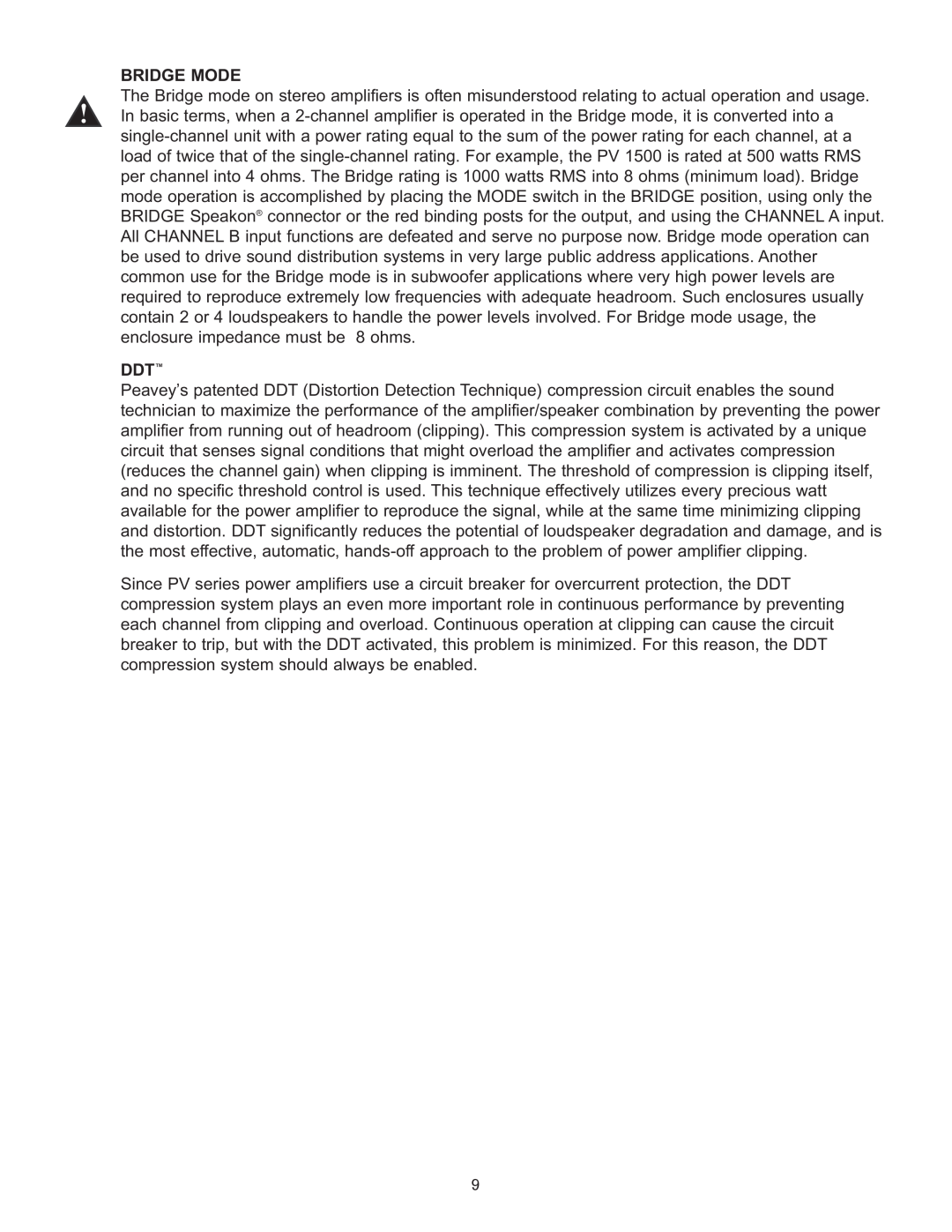BRIDGE MODE
The Bridge mode on stereo amplifiers is often misunderstood relating to actual operation and usage. In basic terms, when a
DDT™
Peavey’s patented DDT (Distortion Detection Technique) compression circuit enables the sound technician to maximize the performance of the amplifier/speaker combination by preventing the power amplifier from running out of headroom (clipping). This compression system is activated by a unique circuit that senses signal conditions that might overload the amplifier and activates compression (reduces the channel gain) when clipping is imminent. The threshold of compression is clipping itself, and no specific threshold control is used. This technique effectively utilizes every precious watt available for the power amplifier to reproduce the signal, while at the same time minimizing clipping and distortion. DDT significantly reduces the potential of loudspeaker degradation and damage, and is the most effective, automatic,
Since PV series power amplifiers use a circuit breaker for overcurrent protection, the DDT compression system plays an even more important role in continuous performance by preventing each channel from clipping and overload. Continuous operation at clipping can cause the circuit breaker to trip, but with the DDT activated, this problem is minimized. For this reason, the DDT compression system should always be enabled.
9
